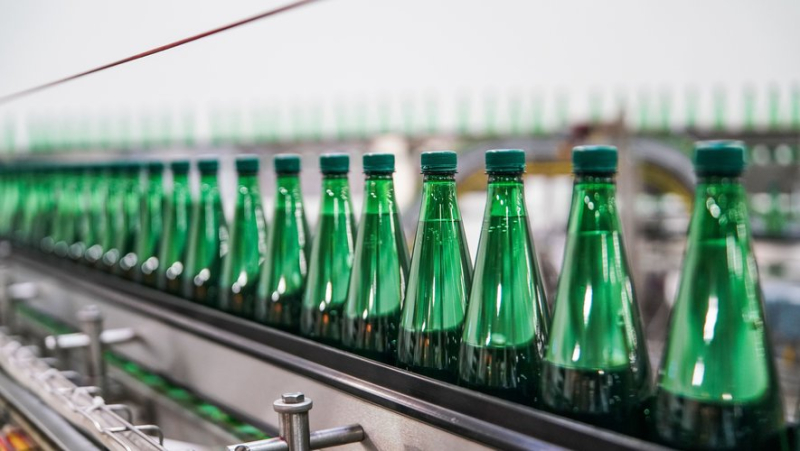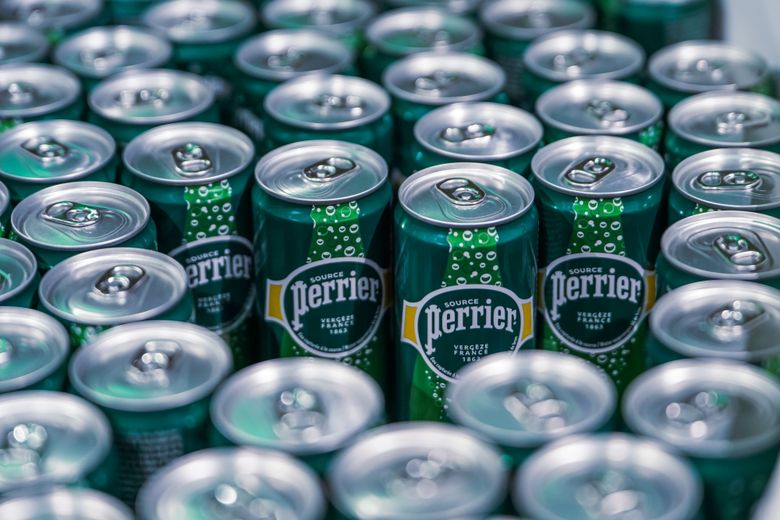Production, employment… What consequences for the Vergèze site after the destruction of two million bottles of Perrier

Two million bottles that could have contained contaminated water were destroyed before leaving the factory. -Mikael Anisset
The Perrier factory in Vergèze employs a thousand people. The closure of one of the seven wells, contaminated by bacteria, will have an effect on sales volumes, not on employment.
1. What the prefect’s order says
On April 19, the prefect of Gard Jérôme Bonet issued an order requiring Nestlé Waters to no longer exploit the Romaine VIII well on the Vergèze site. It is in this Gard commune that the famous Perrier sparkling water has been produced for over a century.
The company, owned by the giant Nestlé since 1992, owns 70 hectares here on which there are seven boreholes. Five are dedicated to the production of the Perrier drink, while two others are reserved for this new range of flavored drinks currently being launched called Maison Perrier.
The catchment in question is one of the five producing Perrier. His bacteriological analyzes were poor from March 10, with germs of fecal origin. Other samples were taken by the ARS on March 14, March 20 and March 26.
The Regional Health Agency also noted that contamination by pseudomonas aeruginosa was also highlighted at the level of ;rsquo;a microfiltration unit located upstream of the bottling line number 34.
The prefectural decree clearly establishes a link with the Mediterranean rainy episodes that occurred a few hours before the contamination, and even notes that this is not the first time on the Romaine VIII well. The administration notes that "the measures put in place by the operator to identify and remove the source of pollution did not make it possible to have available water that complies with bacteriological standards" and also that these Mediterranean episodes are likely to recur "both in frequency and intensity".
The prefect therefore considers that contamination of the water packaged from this drilling cannot be excluded, and "may pose a health risk consumers". Therefore, logically, prohibits the operator from continuing to draw water from this specific catchment.

The Vergèze factory produced 1.2 billion “cols” in 2023 and plans to return volumes to around 1.7 and 1.8 billion. Midi Libre – MiKAEL ANISSET
2. What consequences ?
This is in no way a product recall. The bottles were suspected of containing contaminated catchment water and were destroyed on site.
The destruction concerns precisely 2 million "cols" or units (a "col" can be a can, a small or large bottle, plastic or glass…) when, in the year 2023, the’ The Vergèze factory has produced 1.2 billion bottles and has the ambition to regain its former capacities around 1.7 to 1.8 billion. Nestlé Waters assures that in the immediate future, all references will be present in the trade, but perhaps with a drop in volumes for some.
In terms of employment, the group declares that there is no impact on the activity of the site (which has around a thousand employees).
3. When will we return to normal ?
The prefecture considers that it is necessary to carry out additional research campaigns in order to identify the potential source(s) of water pollution, before putting the drilling back into service. A hydrogeologist approved in matters of public hygiene will be requested.
Monitoring the quality of the raw water from this well could last up to one year. A new prefectural decree will be necessary to re-exploit this drilling, it will only be taken after advice from the director of the ARS.
I subscribe to read more




